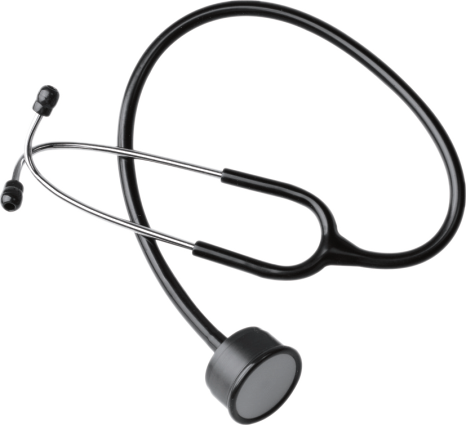
Stethoscope
The stethoscope is a medical instrument that has been used for centuries to listen to the internal sounds of the body.
Specially designed light weight plastic chestpiece offers high quality acoustic effect even in a noisy environment, come with inner spring binaural tubing.
The stethoscope is a medical instrument that has been used for centuries to listen to the internal sounds of the body. It is one of the most important tools in a physician’s arsenal, and its history is as fascinating as the instrument itself. The stethoscope was invented in 1816 by French physician René Laennec. At the time, doctors would place their ear directly on the patient’s chest in order to listen to their heartbeat. However, Laennec thought this method was too intimate and invasive, so he came up with the idea of using a wooden tube to amplify the sound. Laennec’s invention quickly caught on, and by 1850, there were over 100 different types of stethoscopes being used around the world. In 1851, Scottish physician Sir James Young Simpson introduced the first metal stethoscope, which was more durable and had better acoustics than its predecessors. Today, stethoscopes come in a variety of shapes and sizes, but they all serve the same purpose: to help doctors diagnose and treat their patients.
There are many types of stethoscopes on the market, each with its own unique features. Here are some of the most popular types:
1. Traditional stethoscopes: These stethoscopes have a long, thin tube that is placed against the chest piece. They are the most common type of stethoscope and are often used by medical professionals.
2. Electronic stethoscopes: These stethoscopes amplify sound and can be used to hear faint sounds. They are often used in critical care settings.
3. Fetal stethoscopes: These stethoscopes are specifically designed to listen to fetal heartbeats. They are often used by OB/GYNs and midwives.
4. Veterinary stethoscopes: These stethoscopes are designed for use on animals. They typically have a longer tube so that they can reach around the animal's body.
When it comes to choosing the right stethoscope, there are a few things you need to take into account. In this article, we will guide you through the process of choosing a stethoscope, from determining which type is best for you to picking out the perfect accessories. When it comes to accessories for your stethoscope, there are a few things you need to take into consideration. The first is the type of earpieces that you prefer. There are two main types of earpieces: those that go over the top of your ear and those that fit inside your ear canal. The former are more common, but some people find them more comfortable. If you wear glasses, you may also want to consider getting an accessory that helps keep them in place while you're using your stethoscope. Another important accessory is a chestpiece converter. This allows you to use your stethoscope with different size chestpieces. This is especially useful if you share your stethoscope with others or if you have multiple types of patients (e.g., infants, children, adults). Finally, consider getting a carrying case for your stethoscope. This will help protect it from damage and keep all of its parts together.
It is important to keep your stethoscope clean and well maintained in order to ensure its longevity and effectiveness. Here are some tips on how to do so:
-Wash the eartips with warm, soapy water after each use. You can also disassemble the earpieces and wash them separately.
-Use a soft, damp cloth to wipe down the rest of the stethoscope body as needed. Avoid using harsh chemicals or cleaners as this can damage the finish.
-If you notice any parts of your stethoscope that are damaged or worn, replace them immediately. This includes things like cracked eartips, frayed tubing, and loose screws.